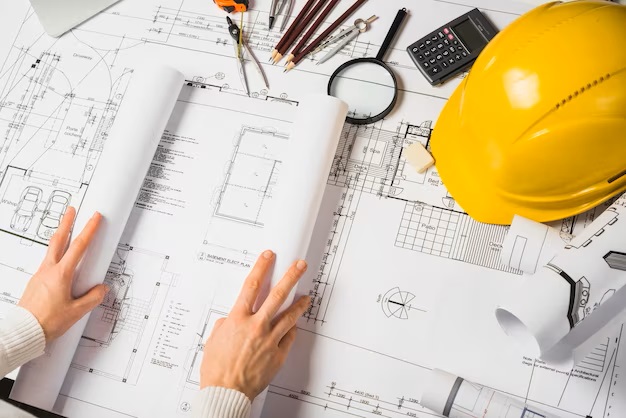Engineering & Design Academic Library

This course requires substantial independent work with research and writing related to projects which are required to complete the course. A student will be unable to pass the course without completing the research, analysis, and writing portion of this course successfully. Assignments in this course place a strong emphasis on student inquiry, research, and writing, and much of the assessment is based on writing projects.
Engineering & Design
UNIT 1: INTRODUCTION TO ENGINEERING AND DESIGN AND THE DESIGN PROCESS
- Course Overview
- Design Opportunities All Around Us
- Design Improvements
- Project 1: Creating a Product Discussion Forum
- Improvements of Everyday Items
- Project 2: Model or Prototype Suggestion Presentation
- Quiz 1: Introduction to Design Opportunities
- Basic Engineering Concepts
- Choosing Materials for Design
- Project 3: Researching Materials Designs
- Application of Materials
- Quiz 2: Fundamentals of Engineering
- Project: Special Project –Notebook (Required)
- Test
- Glossary and Credits
UNIT 2: FLUID SYSTEMS: ENERGY AND POWER TECHNOLOGIES IN ENGINEERING
- Fluid Power Systems
- Fluid Power Devices
- Project 1: Researching a Fluid Power System Goal
- Designing Fluid Power Systems for Future Developments
- Project 2: Creating a Fluid Power System for the Future
- Quiz 1: Introduction to Fluid Power
- Common Applications for Fluid Power Systems
- Project 3: Identifying Fluid Power in Daily Life
- Efficient Fluid Power Designs
- Designing a Fluid Power Lifting System
- Project 4: Designing a Fluid Power Lift System
- Quiz 2: Fluid Power Applications and Capabilities
- Test
UNIT 3: MODELING AND SKETCHING
- Introduction to Technical Sketching and Drawing
- Project 1: Interview an Engineer About Sketching
- Geometric Shapes and Solids in Engineering
- Drawing to Scale
- Project 2: Creating a Technical Sketch of an Everyday Object to Scale
- Quiz 1: Introduction to Design and Technical Sketches
- The Applications for Modeling in Engineering
- Modeling and Prototypes
- Project 3: Researching Model Uses in Remote or Dangerous Locations
- Designing a Sketch Model
- Quiz 2: Sketch Modeling
- Test
- Glossary and Credits
UNIT 4: REVERSE ENGINEERING
- Reverse Engineering: Visual Analysis
- Reverse Engineering: Functional Analysis
- Project 1: Creating a Function Structure Diagram or Product Teardown Chart
- Reverse Engineering: Structural Analysis
- Project 2: Creating a Morphological Matrix
- Quiz 1: Introduction to Reverse Engineering
- Finding the Product: The Reverse Engineering and Design Process Applied
- Implementing the Procedure: Reverse Engineering a Product
- Calculating the Process: Materials, Time, and Cost for Improvement
- Project 4: Researching Materials, Time, and Cost for Product Modifications
- Quiz 2: Using Reverse Engineering for Product Improvement
- Test
- Glossary and Credits
UNIT 5: ENGINEERING TO IMPROVE SUSTAINABILITY
- Environmental Engineering Introduction
- Project 1: Researching a Local Sustainability Issue
- Energy and Air Quality
- Green Buildings and Green Initiatives
- Project 2: LEED Ratings for Building Construction
- Quiz 1: Introduction to Environmental Engineering
- Environmental Assessment and Impacts
- Project 3: Researching Life Cycles for Assessment
- Green Design Principles: Systems and Environment
- Incorporating Green Engineering Principles
- Project 4: Creating a Decision Matrix for an Environmental Issue
- Quiz 2: Environmental Life Cycle and Green Engineering Design
- Test
- Glossary and Credits
UNIT 6 – REVIEW, AND EXAM
- Course Review
- Exam
